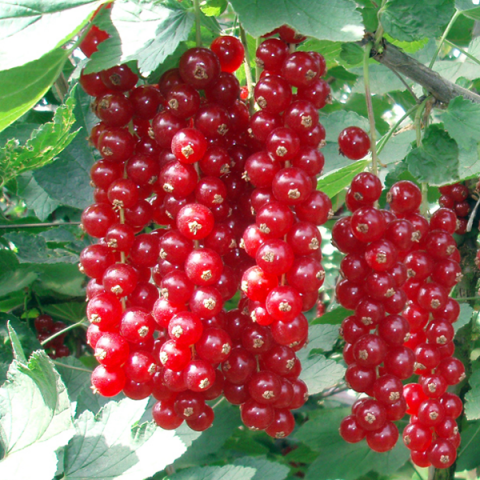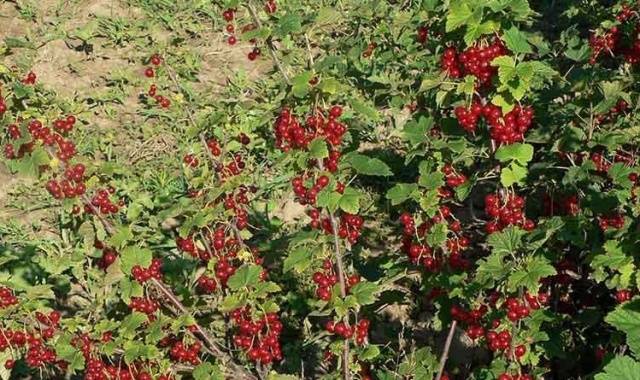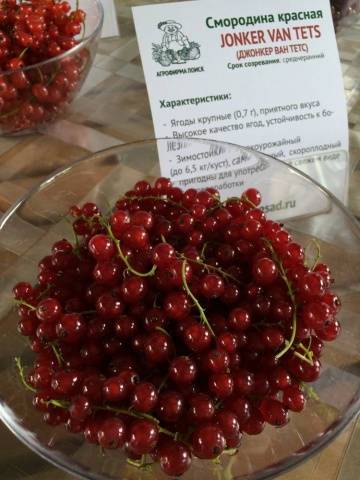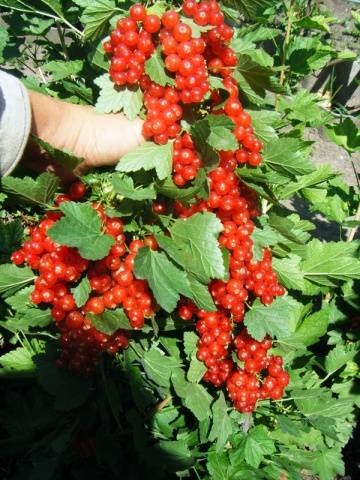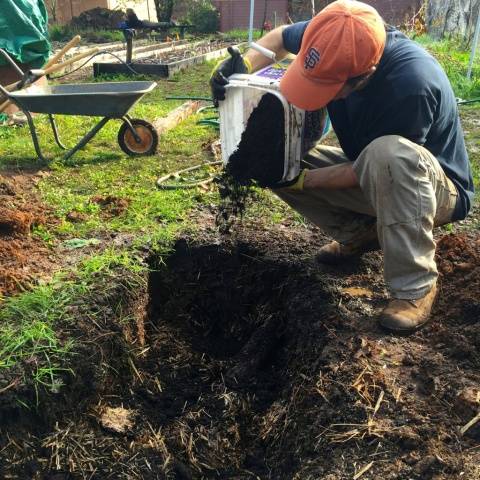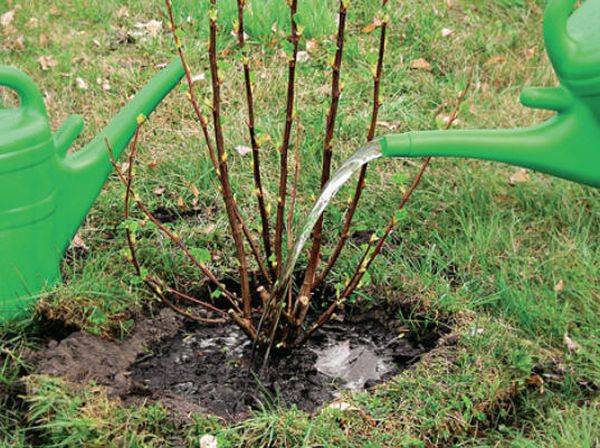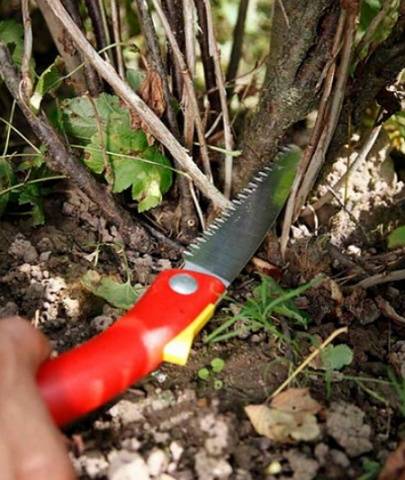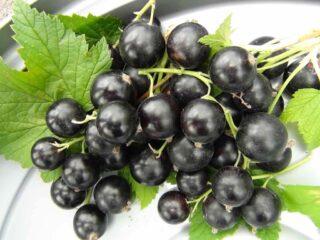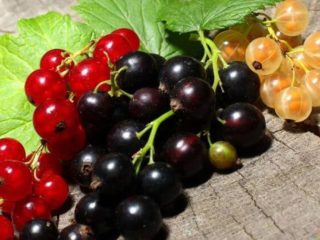Content
Today, gardeners can create on the site a real rainbow of varieties of currants with different colors of berries. There are plants with black, yellow, white, red berries. The assortment of plants is quite wide, but not all gardeners are familiar with the description and characteristics of plants.
Currant variety Jonker Van Tets - the owner of red berries. According to experts, red-fruited varieties contain many useful substances. The features of the plant, the rules of reproduction, cultivation and care will be discussed in the article.
Description
The description of the Jonker Van Tets currant variety was given by Dutch breeders back in 1941. At first, the plant began to grow in Western Europe, it was brought to Russia in 1992. The variety is intended for cultivation in regions with a temperate climate.
Bush
The development of the Jonker red currant bush is intense. There are a lot of overgrowths, and the shoots are erect. Stems of young shoots are pinkish without pubescence. Older shoots can be identified by their light beige color. Shoots are flexible, so they do not break.
Large leaf blade with five lobes of dark green color. The blades are in the form of pointed triangles of different lengths. There are jagged edges on each leaflet. The leaf blades are held on thick petioles.
Flowers
The buds are small, held on a short stalk, shaped like an egg. The flowers emerging from the buds are large, open like saucers. The greenish sepals are tightly pressed together. The petals are large, back-triangular.
The currant of this variety produces tassels of different lengths, each of which forms about 10 berries. They sit on a green petiole of medium thickness.
Currant variety Jonker Van Tets is distinguished by large round or pear-shaped fruits, which can be clearly seen in the photo. The berries have a dense, bright red skin. There are few seeds inside, within five pieces. The berries taste sweet and sour, and go well for fresh consumption and processing.
Red fruits contain:
- dry matter - 13.3%;
- various sugars - 6.2%;
- ascorbic acid - 31.3 mg / 100 g.
Benefits of the variety
Despite the fact that today there are a huge number of new varieties of red currants, according to gardeners, no one wants to refuse Jonker Van Tets. It's not only about the taste, but also about the great benefits of red berries. They contain a lot of minerals, vitamins of groups A, C, P, tannins and pectin substances.
An ancient variety of currants has a lot of advantages:
-
High and stable yields from year to year. One adult bush of the Jonker variety yields up to 6.5 kilograms of berries. When grown on an industrial scale and in compliance with agricultural standards, 16.5 tons are harvested per hectare.
- Self-pollination of the variety is high. But if other varieties of red currants grow with Jonker Van Tets, the berries become larger. Harvesting begins in the second year after planting the bushes.
- This red currant variety has good transportability. When picked, the berries are easily torn off, do not get wet and do not flow in the future.
- Jonker currants are frost-resistant, but, despite this, for the winter, the root system must be well covered with compost.
- The variety of Dutch breeders is unpretentious in care,
- The plant is resistant to powdery mildew, anthracnose and bud mites.
In nature, there are no ideal plants, the Jonker Van Tets currant variety also has some disadvantages.In particular, due to early flowering, the bushes can suffer from spring frosts, which leads to the fall of the ovaries.
Growing and care
When the red currant variety Jonker began to be grown in Russia, suitable regions were selected: North-West, Volgo-Vyatsky, Central Chernozem. According to the description, the plant thrives in a temperate zone. Currants endure frost in winter or drought in summer. In the spring, when the air temperature fluctuates from minus to plus parameters, the surface around the bushes is mulched.
Seat selection
For red currants of the Jonker Van Tets variety, choose a sunny spot on the site. When planted in the shade, the berries do not have time to collect sugar, they turn out to be very sour. The harvest is also declining. A good place would be along fences or next to buildings. Plants have a hard time tolerating northern winds.
The height of groundwater is taken into account when planting. Red currants also do not like when the water stagnates. If the site is in a lowland, the seats are made on an elevation, and a thick drainage cushion is laid on the bottom of the pit. Then soil is poured into which humus or compost, wood ash are added.
The soil for Jonker Van Tets currants should be slightly acidic. The best option is loam and sandy loam soils.
Planting seedlings
Before starting work, the seedlings are examined for damage and disease. If there are signs of disease, it is better to refuse planting material. The seedlings are placed in water so that the root system is saturated with water.
In order for the plant to adapt faster after planting, the shoot is cut by 2/3, and the leaves are also shortened. The seedling is placed in the hole at an angle of 45 degrees and watered abundantly. Then sprinkle with earth. The ground is trampled
How to plant red currants correctly:
Watering
Red currant varieties Jonker Van Tets are described as a drought-resistant plant. Water it in the absence of rain 2-3 times a week. A bucket of water is poured under one bush.
In July and August, the amount of water increases. During this period, fruits ripen on the bushes and flower buds are laid for fruiting in the next season. If there is not enough moisture, then not only the current, but also the future harvest can be missed.
Top dressing
For successful fruiting and obtaining a bountiful harvest, Jonker red currants are fed in the spring. At this time, the plants are fed with organic matter. Plants respond well to horse humus or humus. Be sure to add wood ash (100 grams per bush), which is then sealed when loosening into the ground.
Today many gardeners refuse mineral fertilizers. But if they are used, then such a nutrient mixture is introduced under each currant bush:
- double superphosphate - 70-80 grams;
- potassium sulfate - 30-40 grams.
Pruning
To obtain a stable harvest, the red currant bushes of the Jonker Van Tets variety must be shaped. If pruning is done correctly, then this will not only increase the yield, but also help the plant to cope with diseases and pests.
Pruning features:
- The bushes are cut for the first time at the time of planting. The branches are cut by 2/3. Thanks to this procedure, the plant begins to bush, expels lateral shoots.
- In the spring, pruning is carried out early, until the buds begin to swell. Frost-damaged or broken twigs are removed, and the tops of the shoots are cut by 5-6 centimeters.
-
In the fall, after harvesting, old branches are cut out, which have been bearing fruit for more than 4-5 years. Shoots with damage and disease are subject to removal. You need to cut branches near the ground so that hemp does not remain, as in the photo below.
- According to the description and reviews of gardeners, the red currant Jonker grows strongly over the summer. That is why it is necessary to cut out excess growth so as not to weaken the bush.
With the correct formation of an adult bush, there should be about 15-20 shoots of different ages in it. Only healthy and strong branches are left for replacement. Experienced gardeners recommend rejuvenating the Jonker variety every year by removing the oldest shoots.
Cut off shoots, not damaged by diseases and pests, can be used for propagation of currants.
Diseases and pests
According to the description and numerous reviews of gardeners growing the Jonker Van Tets raspberry variety, the berry bush is resistant to many crop diseases. But you still can't do without preventive treatments. This will help minimize anthracnose and kidney mite infestation on the bushes:
- For anthracnose, plants are sprayed with fungicides and antifungal drugs, Bordeaux liquid or copper sulfate. Any drugs are diluted in accordance with the instructions.
- As for the kidney mite, in order to destroy it early in the spring, until the soil thaws, the bushes are watered with boiling water. You can process the currants with Fufanon before budding. Spraying with colloidal sulfur gives a good effect. For a ten-liter bucket, 150 grams is enough.
To combat powdery mildew, aphids and caterpillars, you can use a folk remedy - onion peel infusion.
Tips for spring treatment of currant bushes:
